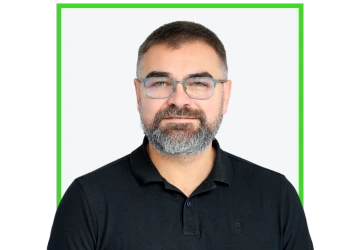R&D Centers
Materials Science & Engineering Center
The Materials Science & Engineering Center develops research and measurement services focused on the fabrication, design, modification, and characterization of functional materials with potential application uses. Designing and producing materials with well-defined and controlled properties requires the work of multidisciplinary research groups whose expertise spans chemical, physical, and engineering sciences.
Key research directions include the study of composite materials and coatings (e.g., self-cleaning, anti-graffiti, and anti-icing), as well as the synthesis of luminescent, thermochromic, thermal, and mechanical systems. We also synthesize antibacterial, electrical, and sensor systems, search for new deep-UV emitters based on group-III nitrides (AlGaInN), and design new functions and applications for sequence-defined macromolecules that go beyond classical polymer uses.
We carry out implementation-driven projects while maintaining a strong foundation in basic research, and our Research Groups and Laboratories form a multidisciplinary and synergistic team of scientists dedicated to advancing modern technologies.
Director of the Materials Science & Engineering Center, Prof. Detlef Hommel
Laboratories
Materials Research Laboratory
Clean Room Laboratory
Contact us
Do you need laboratory analyses or individual consultations? Contact us today!
- laboratoria@port.lukasiewicz.gov.pl
- +48 510 131 925
- 147 Stabłowicka St, 54-066 Wrocław
Research Groups

Advanced Semiconductor Epitaxy Research Group
We focus on researching new deep-UV emitters based on group-III nitrides (AlGaInN) in systems featuring unique material combinations that include, among others, arsenic and boron, and in the future also other group-III elements. The Group conducts fundamental research to support innovative implementations related to water purification processes and disinfection technologies for the medical and healthcare sectors.

Photonic Materials Research Group
We are interested in photonic materials that can emit, detect, reflect, transmit, convert, modify, and control light. Our goal is to study light–matter interactions in new materials such as perovskites and chalcogenides, as well as in the photonic structures associated with them.

Advanced Materials Synthesis Research Group
The research conducted in our group is focused on the design and synthesis of inorganic compounds (phosphors, metallic or oxide nanoparticles) and organic compounds with engineered physicochemical properties, including luminescent, thermochromic, thermal, mechanical, as well as antibacterial, electrical, or sensor-related properties.

Biomaterials Engineering and Environmental Technologies Research Group
The Research Group develops interdisciplinary research in the areas of the bio-economy, circular economy, and energy transition. The team focuses on creating technologies for converting biomass and waste into valuable products — energy, biohydrogen, carbon materials, and innovative biomaterials.

Functional Macromolecules and Porous Materials Research Group
Our research focuses on polymers with a defined monomer sequence. We develop new polymer synthesis methods that allow precise programming of monomer sequences. We also work on achieving control over polymer structure and folding.